

Eating healthy, shopping smart
By Tony BennettIt’s one of those questions that never seems to have an answer: How does one eat healthy food on a regular basis without spending too much money? In times like these, when prices on food and other necessities are ever-rising, it’s even more of a conundrum.
Jennifer Gilbertson, the Community Outreach and Education Coordinator of Whole Foods Co-op on the east side of Duluth, is a person who thinks about this kind of stuff as a part of her job. She even teaches classes on the topic. For her, it comes down to a simple
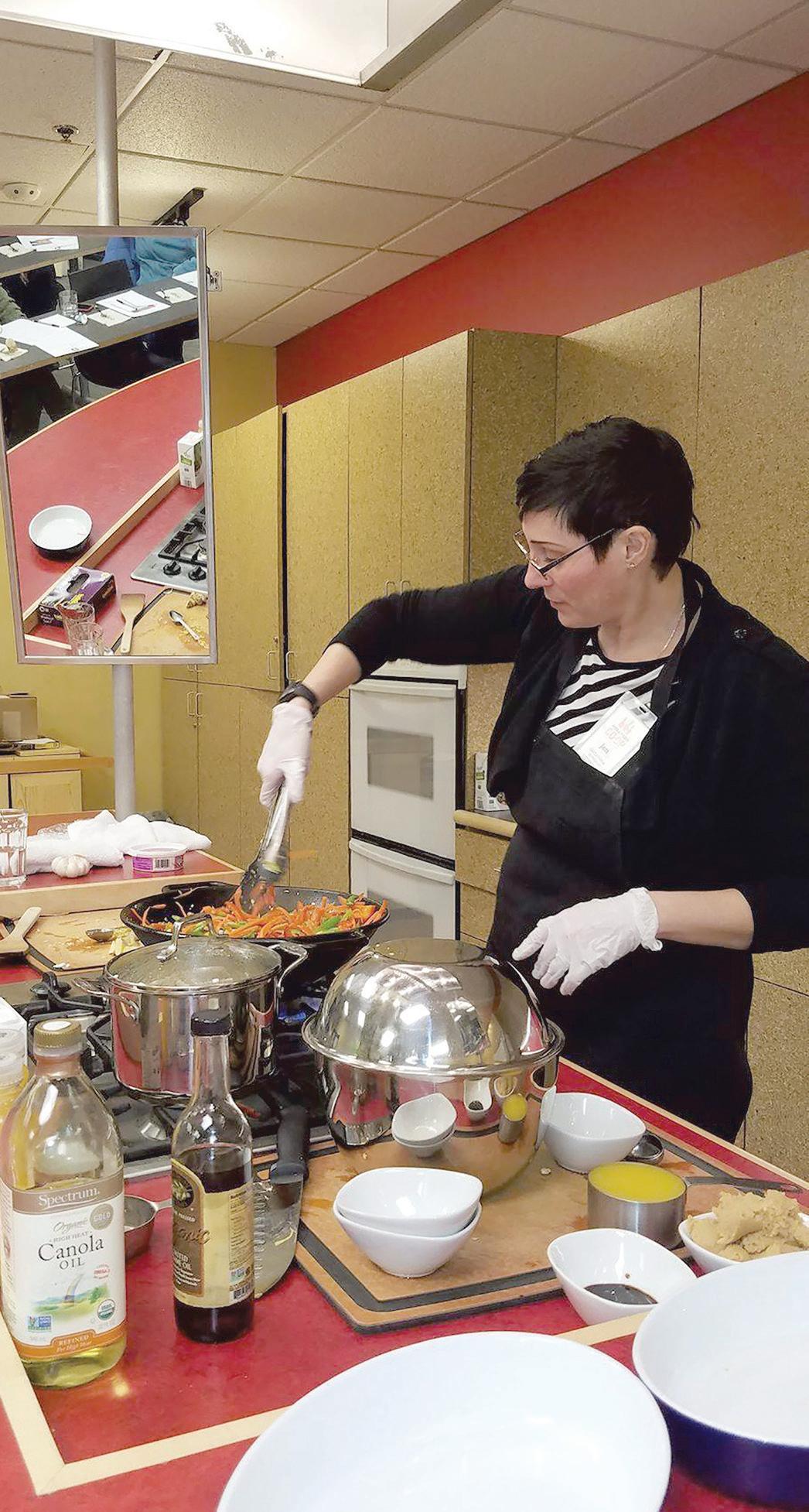

Starting the conversation
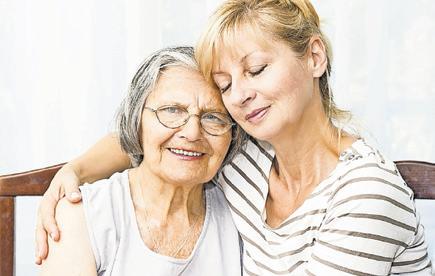
quote from author Michael Pollan: “Eat food. Not too much. Mostly plants.” Gilbertson, who has a background in fitness instruction, started at the co-op as a cashier and was tapped to help guide people through the maze of good nutrition.
“Moderation is key,” she said. “Depriving yourself of something usually backfires, and makes it 10 times harder. So, if you’re wanting to lose weight or just eat healthier, it’s (about) trying to find the middle ground for everything.”

Also, baby steps are good.
“Doing a major overhaul of your diet usually backfires,” Gilbertson said. “It causes people to crash and burn and then revert.”
So, what are the best moves to make? One: Stay hydrated.

“When I wake up in the morning, I take vitamins, and I drink a full glass of water, probably 16 ounces, at least,” Gilbertson said. “That kinda jump-starts the metabolism.”
Eat your fruits and veggies, too.
“There’s something called ‘eating the rainbow,’ which is a reminder to diversify what you’re eating, and try to fit in many colors,” Gilbertson said. “Each of those colors have different nutrients that are important and can’t be obtained in other ways.”
This also means trying to forego packaged, processed foods as much as possible.
Ingesting that rainbow can be spendy, though, especially in this
region. Gilbertson suggests people buy in-season as much as they can.
“Citrus is really inexpensive right now,” she said, “but it’s also filled with vitamin C, which we need to stay healthy during the winter months.”
She points out that freezing seasonal things for later is a viable option for long-term savings.
Similarly, Gilbertson suggests people find healthy recipes, make a big batch of food, and then freeze a good portion of it for later use.
“Pinterest is one of my favorite go-tos for finding new recipes,” she pointed out.
Gilbertson also said that people who are interested in improving their eating habits — while also saving cash — should peruse the co-op website for flyers and discounts, and her wide variety of online classes for all ages are currently all free.
Tony Bennett is a Duluth freelance writer.
S

Moments like these help you realize that everythingyou need is right here.That you can count on your friends and family to be there for you. Andyou can count on us, too. Our knowledgeable and supportive staff will help you find the medical equipment that can best contribute to yourhealth and wellbeing.

“When I wake up in the morning, I take vitamins, and I drink a full glass of water, probably 16 ounces, at least.
-Jennifer Gilbertson
Se

Se l f a r e
lf C are SCHEDULE YOUR FREE FOOT EVALUATION AT
tips from the





FOOT CARE FOR AGING ADULTS: PROS
 By Andrea Busche
By Andrea Busche
We all know that our bodies change as we age, as gravity and general use take their toll. But, did you know that these changes also apply to your feet?
“Our feet get longer and wider as we age,” said Mike Nielsen, an orthotist at Benders Shoes & Gifts. “Our ligaments wear out, our feet have more laxity, and some people even develop arthritis in their feet.”
Thankfully, there is plenty that can be done to address the discomfort that can accompany aging feet. And it all starts with a bit of prevention.
THE EXPERTS
Nielsen and his colleague, Tara Bender-Paulson, who is currently in residency to become a pedorthist, know a lot about the foot.
An orthotist assists with braces and orthotics for the feet. A pedorthist specializes in shoes, shoe modifications, and supportive devices. Together with other medical professionals, Nielsen and Bender-Paulson help keep their customers’ feet comfortable and healthy, well into their senior years.

“We are not allowed to diagnose foot conditions, but we are able to evaluate and try to help our customers address their concerns,” Bender-Paulson said. Often, doctors and physical therapists refer their patients to Benders for shoes and supportive devices, but it also goes both ways. “We may also refer our customers to a podiatrist, physical therapist, or other doctor if we think that would help,” she added.
Nielsen explained many of the conditions they can address in their profession.

“This time of year, we are inundated with people with plantar fasciitis,” he noted. “We also see customers with Achilles tendonitis, Morton’s neuroma, posterior tibial tendon dysfunction, arthritic joints, heel pain, bone spurs, low or flat arch, and high arch.”
The team at Benders can also help people of all ages find a proper fitting, comfortable shoe — even if they don’t have a specific medical concern. The store welcomes walk-in customers as well as referrals from medical personnel.


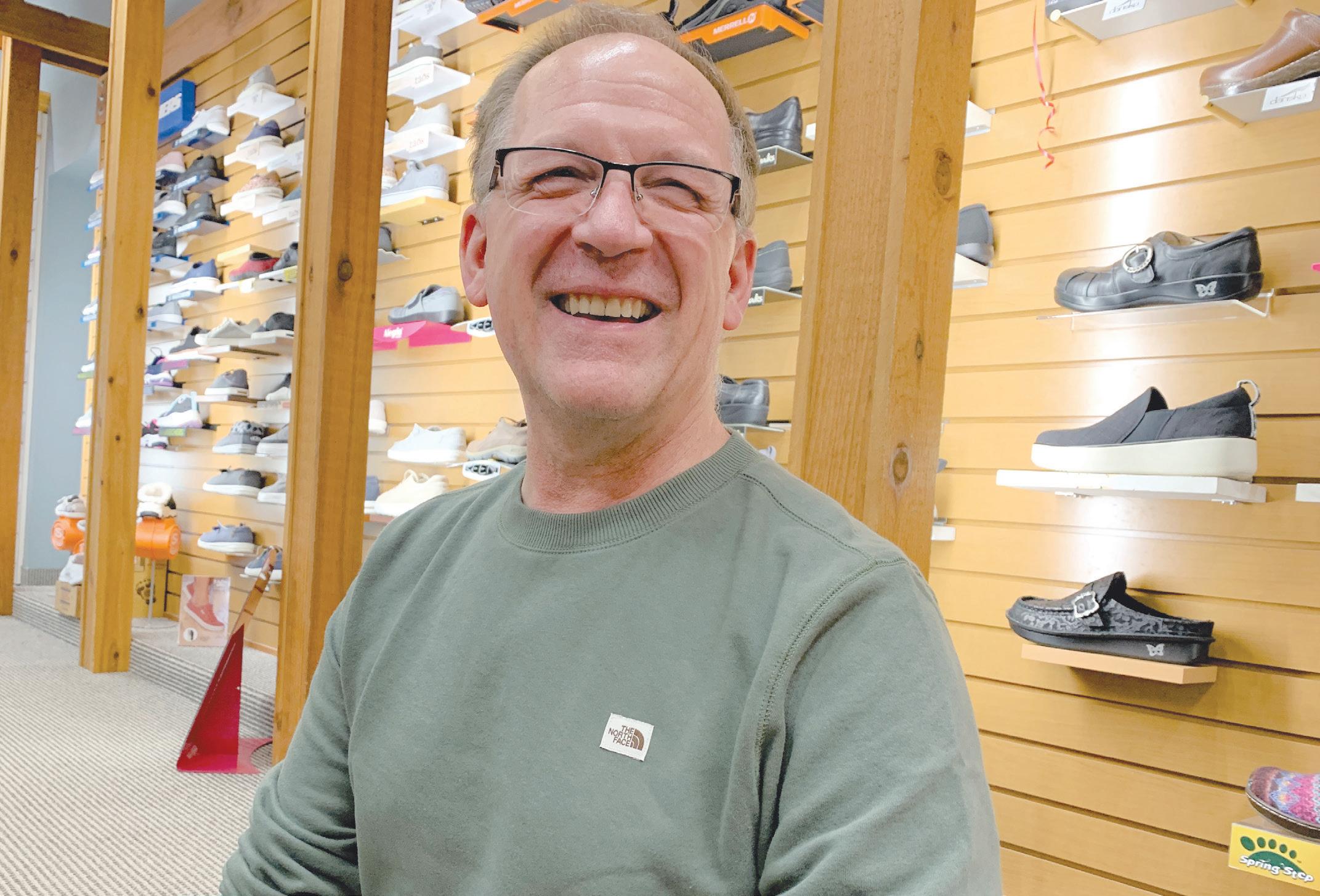
Did you know?
According to the Alzheimer’s Association, people with a parent or sibling with Alzheimer’s disease are more likely to develop the disease than those who do not have a first-degree relative with Alzheimer’s. In addition, those who have more than one first-degree relative with Alzheimer’s are at an even greater risk of getting Alzheimer’s. Though family history is not necessary for an individual to develop Alzheimer’s, the AA notes that researchers have identified hereditary Alzheimer’s genes. For example, researchers estimate that between 40 and 65 percent of people diagnosed with Alzheimer’s have the APOE-e4 gene. APOE-e4 is characterized as a risk gene because it increases the likelihood of developing Alzheimer’s but does not guarantee it will happen. The gene is inherited from a parent, and people who inherit two copies of APOE-e4 from their mother and father have a higher risk for Alzheimer’s than those who inherit one copy of the gene from their mother or father. The AA also notes that researchers have found deterministic genes that cause Alzheimer’s. However, these genes are rare and have only been found in a few hundred families across the globe, accounting for 1 percent or less of all Alzheimer’s cases.
TIPS
As noted, aging feet require some special considerations. And, Nielsen can relate. “Being 62, I know that everything worked better 20 years ago,” he noted with a laugh.
Foot health for seniors begins with some simple prevention.
“Proper shoe fittings are important,” Nielsen said. “We start by looking closely at the shape of a person’s foot. Everybody’s feet are so diversely different, but there are two typical foot shapes — I call them the ‘Fred Flintstone’ and the ‘Cinderella.’ We want to make sure the shoe has the same contour as the person’s foot.”
Arch support is also addressed during a fitting. To accomplish a great-fitting shoe, a visit with a foot professional, such as a pedorthist, is a great choice.

Another good option, according to BenderPaulson, is having a

good, supportive pair of shoes to wear indoors. That’s right; supportive footwear worn indoors can often be a better choice than walking around barefoot, or even in socks or slippers. A “house shoe” should be just as supportive as your daily shoe.
And, compression socks may be a good choice for those with swelling around the feet and ankles — also known as edema. This is a common issue experienced by seniors. Compression socks are a great choice for people who are on their feet all day, too.
Lastly, supportive devices, such as orthotics, are another option for seniors to keep in mind.

FOOT HEALTH TRANSLATES TO OVERALL HEALTH
We only get one pair of feet. It’s important to show them a bit of extra care as we age,
to help maintain our overall health and mobility.
“Over the course of my career, I’ve really learned that alignment equals stability,” Nielsen said. “And alignment of the ankle and foot translates to alignment of our hips, knees and back.”
“It’s amazing to me to think about how much the foot goes through,” Bender-Paulson added.
“Your feet carry you around every day of your life.”
BENDERS
Benders Shoes & Gifts is a familyowned business, with three locations: Grand Rapids, Hibbing and Duluth. The Duluth store recently relocated (and expanded from 4,000 to 10,000 square feet) to 901 West Central Entrance. In addition to selling shoes and supportive devices, Benders also carries clothing, home décor, gifts, and more.
Andrea Busche is a Duluth freelance writer.
Alleviate everyday
ACHES AND PAINS
Pain occurs for a variety of reasons. Pain may be a byproduct of overuse of a particular part of the body, or it could signal an underlying illness or condition. Sometimes injury is at the heart of aches and pains.
Daily aches and pains may be seen as a normal byproduct of aging, but that does not mean aging individuals should simply accept pain. In fact, daily discomfort can be remedied with some relatively easy techniques.


GET MOVING
Nielsen and his colleague, Tara Bender-Paulson, who is cuLower back pain is common among adults, and most often appears when individuals are in their mid-30s and 40s. Strength training and cardio exercises can remedy this pain because these activities increase blood flow and help build core muscles, which support the spine. Support can alleviate pressure on the discs in the back. Exercising also will build strength in other areas of the body and support joints.
PRACTICE GOOD POSTURE
Sitting and standing with optimal posture can help the body feel better. The body is designed to stand in a “neutral” position that stacks the pelvis, head and torso, according to DMC Healthcare. When posture is out of whack, this puts undue stress on muscles, leading to pain. Dropping your head or shoulders also can create unnecessary tension that leads to headaches. Good posture can alleviate this.
EXERCISE MORE OFTEN
Certain pains arise when exercising for the first time or performing a new activity. Allan H. Goldfarb, Ph.D., a professor and exercise physiologist at the University of North Carolina, Greensboro, says when you do the same activity again and again, your muscles will start to get used to it and soreness will be reduced. Don’t give up on exercise too soon, but include off days in your routine to give your body time to become more acclimated to increased physical activity.
GET TESTED
Speak with your doctor if you have chronic pain in one or more areas. Such pain may be a sign of osteoarthritis, an inflammatory condition that is associated with aging. Rheumatoid arthritis and other autoimmune conditions can cause aches and pains as well, leaving the joints and tendons inflamed and a body with low energy. A doctor can rule out these conditions or help you get the therapy and medications you need.
INCREASE STRETCHING AND MOVEMENT EXERCISES
Incorporate stretching and movement exercises like yoga or tai chi into your daily regimen. These activities slowly stretch areas of the body and can improve range of motion and flexibility over time.
These are just a few ways to address common aches and pains. Medical interventions, physical therapy, occupational therapy and ergonomics assessments, and massage therapy also may help to alleviate aches and pains.
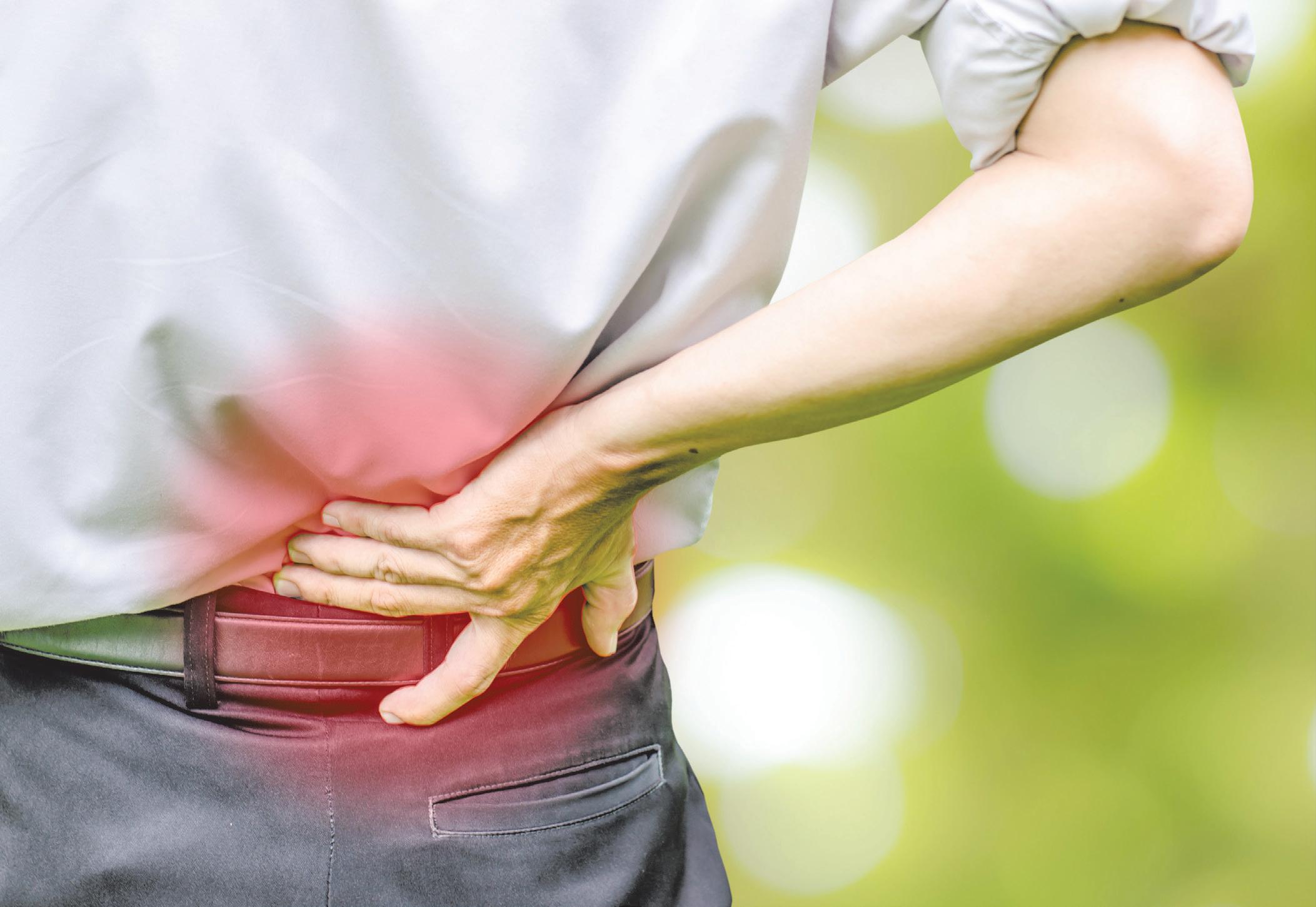
The various health BENEFITS OF YOGA
Metro Creative Graphics

Health-conscious individuals can do many things to improve their overall health. As medical researchers continue to uncover new things about how to achieve optimal health, one practice dating back to ancient times remains a highly effective way to take care of the human body.
Though there’s no written records regarding the origins and invention of yoga, the practice is believed to date back to ancient India. The earliest written record of yoga is “The Yoga Sutra of Pantañjali,” a collection of aphorisms that historians believe was compiled sometime between 500 BCE and 400 BCE.
Despite its age, yoga has not been studied extensively by medical researchers. According to the National Center for Complementary and Integrative Health, many studies looking into the health effects of yoga have included only small
numbers of people and have not been of high quality. As a result, the NCCIH can only say that yoga shows promise in regard to helping people manage or overcome certain health issues, but not that it has been proven to do so.

Though yoga may need to be studied more closely and extensively, many people who include it in their regular health care routines report feeling better both physically and mentally for having done so, and that may not be a coincidence. A 2004 comprehensive review of yoga’s use as a therapeutic intervention published in the Journal of Physiology and Pharmacology indicated that yoga targets unmanaged stress, which has been linked to chronic disorders like anxiety, depression, obesity, diabetes, and insomnia.
• Relieve low-back pain and neck pain
• Relieve menopause symptoms
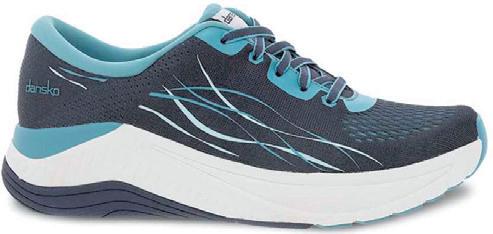
• Help people manage anxiety or depressive symptoms associated with difficult life situations
• Help people quit smoking
• Help people who are overweight or obese lose weight
• Help people with chronic diseases manage their symptoms and improve their quality of life.
It’s important that anyone considering making yoga part of their health care routines recognize that there are various forms of yoga, some of which are more physically demanding than others. So it’s best if individuals speak with their physicians before trying yoga so they can find the type that aligns best with their current levels of fitness.
In addition to that review, the NCCIH notes that research has suggested yoga can:
WHAT SENIORS SHOULD KNOW ABOUT
social media SAFETY
Introducing NewPodcast forCaregivers
Tuneinto The NorthlandCaregiver,amonthlypodcastcreatedby Duluth AgingSupport to help youonyourcaregiverjourney.

Eachmonth, you’llbejoined by yourhostand RegisteredOccupational TherapistDr.Mary LouDonovan,and co-host LeezaOchsnerfrom Duluth AgingSupport,whowillsharehelpfuladviceonsafelyand effectivelycaring foraging familymembers,friends,and yourself alongthe way.
To listen to thepodcast,head to duluthagingsupport.org/podcast orsubscribedirectlyonSpotify,Apple Podcastsorwherever you find yourpodcasts.

Seniors might not be the demographic individuals initially associate with social media. However, Pew Research notes that seniors’ social media usage has been steadily rising for a number of years, proving that individuals 65 and over are not tech-averse. Pew data from 2019 indicates that 46 percent of individuals 65 and older use Facebook. Social media platforms like Facebook and Instagram can be a great way to stay connected with family and friends and stay up-to-date on community events. But social media usage is not without risks, especially in regard to users’ safety. Seniors without much social media experience can heed these safety tips as they navigate popular platforms and discover all they have to offer.
EXAMINE YOUR ACCOUNT SETTINGS
Social media users can control their privacy settings so they can decide who can (and can’t) view their online activity. Each platform is different, but profiles set to public generally allow anyone to view individuals’ activity, so seniors should set their profiles to private to limit access to their information.
BE MINDFUL OF YOUR SOCIAL MEDIA SOCIAL CIRCLE
It’s easy to make virtual friends via social media, but seniors should be mindful of who they accept as online friends. Carefully consider

each friend request and decide just how big or small you want your social media community to be. Many individuals prefer to limit their online social circles to individuals they know well and want to stay in touch with, and that can serve as a good measuring stick when deciding whether or not to accept a friend request.
AVOID SHARING PERSONAL INFORMATION
Seniors are no doubt aware that they should never share especially personal information, such as their Social Security number. However, seniors also should hesitate to share personal information like vacation plans. Seniors who post about upcoming trips could return home to find they’ve been victimized by criminals who scoured their social media accounts and learned when they were going to be away. A good rule of thumb is to keep personal information private and limit posts to information that is not overly specific or sensitive.
RECOGNIZE THE THREAT POSED BY SCAMMERS
Social media platforms have had varying degrees of success in regard to keeping their sites scam-free. But scammers find a way, and users must take steps to avoid being victimized. Never click on a link within a post from someone you don’t know and avoid anyone soliciting donations through social media platforms.
Physical activity is vital to overall health. The World Health Organization says limiting time spent being idle and taking advantage of opportunities to get moving — even if it’s just a little bit of exercise — can go a long way toward improving overall health.
In November 2020, the World Health Organization released new exercise guidelines for people of all ages. Adults should get between 150 and 300 minutes a week of moderate to vigorous aerobic activity, and that includes older adults and those with chronic conditions or disabilities.
Individuals with limited mobility due to age or preexisting medical conditions may
Did you know?
wonder how they can meet the guidelines for exercise. Those with chronic pain or illness sometimes find that exercising for more than a few minutes can be challenging. Even brief periods of exercise can pay dividends, and there are various approaches people can take to work around mobility and other issues.
Seniors and others with limited mobility are advised to first discuss fitness regimens with a physician to get a green light to proceed. Then exercise regimens can be started gradually and altered to become more vigorous as the body acclimates to exercise. Increase duration and frequency as strength and endurance builds.
EXPLORE CHAIR EXERCISES
Just because you are seated doesn’t mean you can’t get a workout in. Seated chair exercises can work various muscle groups. Seated arm rows, tummy twists, overhead arm raises, hand squeezes with a tennis ball, inner thigh squeezes, leg lifts and extensions, and many other exercises can be customized to be performed in a chair.

WORK OUT IN THE WATER
Exercising in the water can assist with movement and reduce strain on the body. The Arthritis Foundation says the water’s buoyancy supports body weight, which minimizes stress on joints and can alleviate pain. Water provides gentle resistance as well — up to 12 times the resistance of air. That means it’s possible to build strength and muscle even just walking or swimming around a pool.
USE RESISTANCE BANDS
Resistance bands are like giant rubber bands that can be used to build up strength and flexibility. Resistance bands are effective, low-cost gear that can offer high-impact results for building muscle, staying fit and increasing mobility. Resistance bands can be used in lieu of hand weights for many exercises and be ideal for those who find barbells and dumbbells are challenging to maneuver.
MIND-BODY EXERCISES ARE AN OPTION
Exercises like Tai Chi and yoga can be beneficial for those with limited mobility. These exercises integrate awareness of body movement with the exercise through coordinated breathing. The exercises encourage people to focus on slow, fluid movements and deep stretching.
According to a 2019 Bureau of Labor Statistics survey of baby boomers, the average number of jobs held in a lifetime is 12. Women spend slightly less time in companies than men. In its 2018 Employee Tenure Summary, the BLS reported that the median tenure for women is 4 years and 4.3 for men. However, women hold nearly as many jobs as men across their careers, despite some taking time off to raise children. Comparatively, women hold 12.1 jobs to men’s 12.5. Certain industries lend themselves to higher rates of tenure. Federal government employees, for example, have long rates of tenure, while the shortest average tenure belongs to workers in the leisure and hospitality sector, according to the career experts at Zippia. Columbia College Calgary reports similar trends in Canada, where the average individual has about 15 jobs in a lifetime. Studies suggest that Canadians in Generation Y tend to hold positions for 2.7 years, Generation X at 3.4 years, and Baby Boomers for 12 years.
— Metro Creative Graphics
RECIPES FOR TWO
Mexican Meat Loaf

Recipe courtesy of www.tasteofhome.com
Prep time: 15 minutes. Bake Time 30 minutes. Makes 2 servings
INGREDIENTS
1 large egg, lightly beaten
3/4 cup canned diced tomatoes, drained
1/2 cup crushed tortilla chips
1/4 cup shredded cheddar cheese
1/4 cup salsa
2 tablespoons taco seasoning
2 tablespoons diced onion
2 tablespoons diced ripe avocado
1/8 teaspoon pepper
1/2 pound lean ground beef
DIRECTIONS
1. Preheat oven to 350 degrees Fahrenheit. In a bowl, combine the first 9 ingredients.
2. Crumble beef over mixture and mix well.
3. Shape into two loaves; place in an ungreased 8-in. square baking dish. Bake until meat is no longer pink and a thermometer reads 160°, 30-40 minutes.
BLT Skillet
Recipe courtesy of www.tasteofhome.com
Prep/Total Time: 25 minutes. Makes 2 servings
INGREDIENTS
4 ounces uncooked whole wheat linguine
4 bacon strips, cut into 1-1/2-inch pieces
1 plum tomato, cut into 1-inch pieces
1 garlic clove, minced
1-1/2 teaspoons lemon juice
1/4 teaspoon salt
1/4 teaspoon pepper
2 tablespoons grated Parmesan cheese
1 tablespoon minced fresh parsley
DIRECTIONS
1. Cook linguine according to package directions.
2. Meanwhile, in a large skillet, cook bacon over medium heat until crisp. Remove to paper towels; drain, reserving 1 teaspoon drippings.
3. In the drippings, saute tomato and garlic for 1-2 minutes or until heated through. Stir in the bacon, lemon juice, salt and pepper.
4. Drain linguine; add to the skillet. Sprinkle with cheese and parsley; toss to coat.

Spring Season Word Search

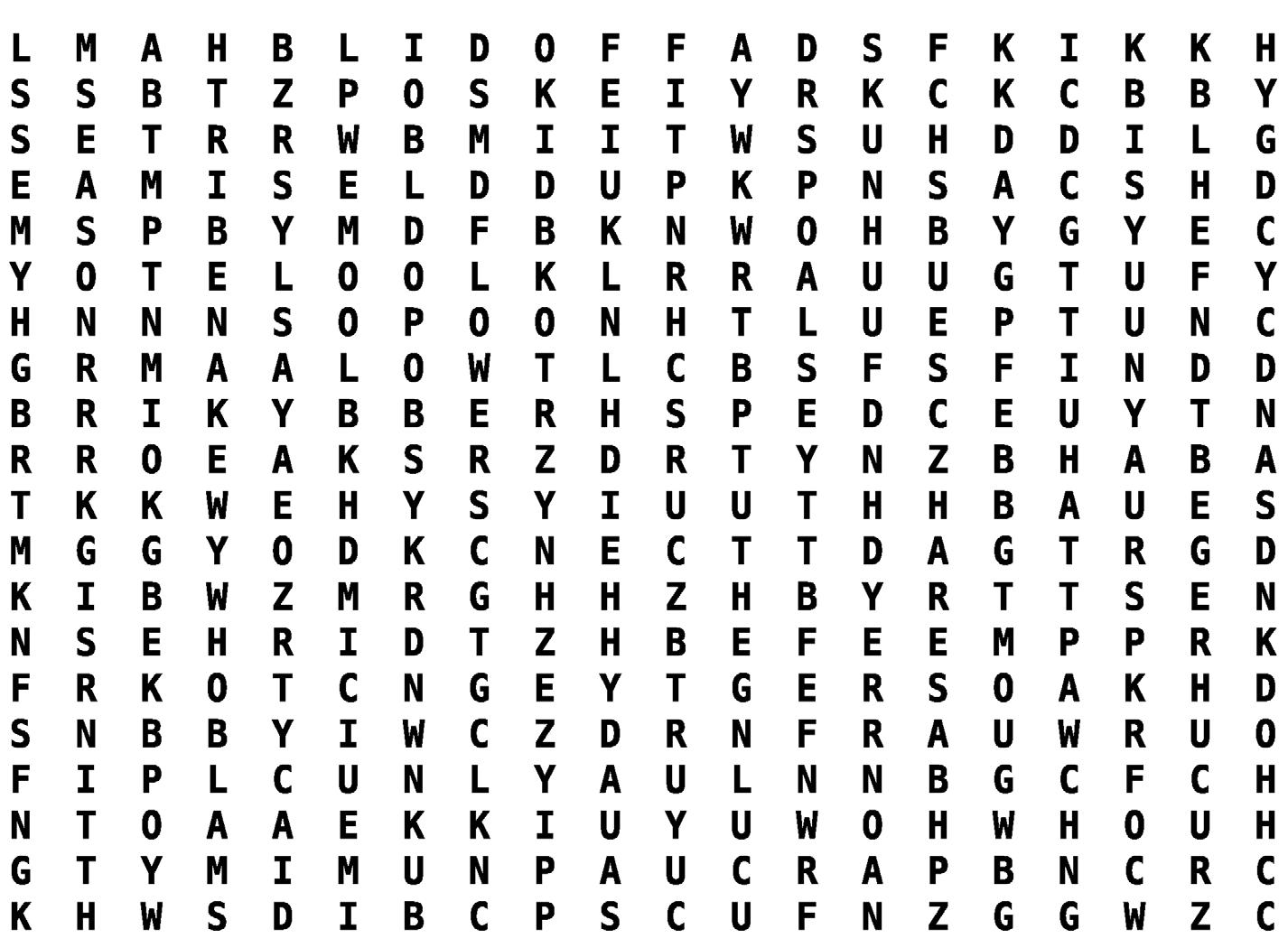
Find the words hidden vertically, horizontally, diagonally, and backwards.
ANSWERS
WORDS
BIRTH BLOOM BREEZE BULBS BUNNY BUTTERFLY CHICK CROCUS DAFFODIL EGGS FLOWERS GREEN
GROW HATCH HYACINTH LAMB MARCH NEST PUDDLES RAIN ROBIN SEASON SHOWERS SPRING
SUDOKU PUZZLE

ANSWERS

Service Directory
FOOT CARE/SHOES
Benders Shoes
Do you struggle with foot pain or problems such as plantar fasciitis, diabetes, high arches, or bunions? Do you have trouble finding comfortable shoes? Foot evaluations are done in-person in our stores. There is no charge for this service. We have stores in Duluth, Hibbing and Grand Rapids.
901 W. Central Entrance, Duluth 218-7464-4416
www.bendersshoes.com
Burger’s Shoes & Repair
We absolutely strive to be your five-star shoe store. You will find an array of top quality brands and products that will keep your feet feeling comfortable. We measure everyone’s feet to ensure a proper fit. It’s not just about the shoes for us...it’s about connecting with the people in our community. We wouldn’t be here for over 60 years without you.
1609 Carlton Ave, Cloquet 218-879-3015
www.burgershoes.com
LEGAL SERVICES
Law Office of Yvonne Michaud Novak
Licensed in both Minnesota and Wisconsin, Yvonne understands the significance of your particular legal problem and takes pride in providing practical solutions tailored to your needs.
Asset Protection & Business Planning, Bankruptcy, Estate Planning, Family Owned Businesses, Incapacity Planning, LGBT Estate Planning, Pet Planning, Trust Administration & Probate
202 W. Superior St., Ste 303, Duluth
218-720-2888
www.ymnlaw.com
MEDICAL EQUIPMENT
Essentia Health-Medical Equipment & Supplies
Proudly serving Minnesota,Wisconsin and North Dakota with orthotics, prosthetics, wheelchairs, handicap aids, respiratory care, and home medical supplies and equipment for over 30 years. Duluth, MN | Virginia, MN | Fargo, ND
1-800-777-8390
EssentiaHealth.org/Services/ Medical-Equipment-Supplies
PHARMACY
Essentia Health Pharmacy
Proudly serving Minnesota and Wisconsin with pharmacy services, including: prescription and over-the-counter medications, medication management, specialty pharmacy services, online refill requests, mail delivery, local and home delivery, immunizations and vaccinations,custom medication packaging, monthly prescription service and more.
1-844-380-5642
EssentiaHealth.org/Pharmacy
REAL ESTATE SERVICES
Sathers JS Realty, LLC
Contact the Sathers J.S. Realty team — Jackie, Jamie, Julie and Braxton — for help buying or selling your home!
5112 Midway Road, Duluth 218-729-9784
www.js-realty.com info@js-realty.com
SENIOR LIVING
Evergreen Senior Living Evergreen is a senior living campus for adults who want to remain independent while having access to services and amenities. With the exceptional services we provide, we are confident you will find what you are looking for, whether it is at Evergreen Knoll-Our Assisted Living Residence, Evergreen Suites-Our Higher Need Assisted Living Residences, or Evergreen CottagesOur independent residences. We emphasize independence, privacy and family involvement. 1309 14th Street, Cloquet 218-878-3302
www.evergreencloquet.org
SENIOR RESOURCES
Duluth Aging Support
We’re a nonprofit organization on a mission to enhance the lives of older adults and caregivers in the Northland through outreach, awareness, advocacy, and collaborative partnerships. To learn more, check out the Senior Information Hub on our website, where you’ll find a robust Resource Directory, The Northland Caregiver Podcast, and so much more!
PO Box 161561, Duluth 218-576-7123
www.duluthagingsupport.org
hello@duluthagingsupport.org
Senior Connections
As the County Aging Unit, Senior Connections provides a variety of services and programs to individuals aged 60 and over, as well as specialized transportation to individuals aged 55 and over and persons with disabilities. 1805 N. 16th St., Superior 715-394-3611
www.seniorconnectionswi.org
How to plan FOR MEDICAL EMERGENCIES
Metro Creative Graphics
Medical emergencies pose a significant threat to human health. According to the National Center for Health Statistics, unintentional injuries accounted for more than 192,000 deaths in 2020. That marks a significant increase since 2015, when NCHS data indicates roughly 146,000 people died from unintentional injuries.
Unintentional injuries are not the only situations that qualify as medical emergencies, which also can result from sudden, life-threatening issues like heart attack or stroke. Knowing what to do in the wake of a medical emergency can reduce the likelihood that such instances end in tragedy. And though medical emergencies might be most often associated with aging men and women, such scenarios can affect anyone at any time. That means it’s in everyone’s best interest to learn how to plan for medical emergencies.
Document your medical history and keep printed documentation in an easily accessible place
Younger individuals likely won’t have as much documentation regarding their medical histories, including existing conditions, medications and even previous emergencies. But all individuals should print out a document that includes a brief rundown of their medical histories, and keep the document in an easily accessible place so caretakers, spouses or roommates can quickly find it and share all relevant information with first responders.
Become CPR-certified
The medical experts at MedStar Health recommend that individuals take classes for first aid and CPR. Such lessons can save lives and help anyone experiencing a medical emergency get immediate attention until first responders arrive to administer additional care. Some organizations may offer free CPR courses, while others, including the American Red Cross, offer training at affordable prices.
Pack an overnight bag
Aging men and women or young people with a history of illness and/or medical emergencies should pack an overnight bag or ask their caretakers to pack one for them. Include pajamas, personal toiletries and other care items, and even some books or activity books so you have something to do should you require an extended stay in the hospital. Include a spare phone or device charger in your overnight bag, as it’s easy to forget such items when you’re hurrying out the door in an emergency situation.
Map out the quickest route to the nearest emergency room
Modern drivers are accustomed to relying on their car’s GPS systems to get from point A to point B. However, during a medical emergency it’s ideal if individuals or caretakers already know where the nearest hospital is and how to get there. That removes uncertainties from the situation and ensures that precious seconds won’t be wasted trying to get devices to connect with automobiles.
WHAT ARE THE WARNING SIGNS OF A MEDICAL EMERGENCY?
No two medical emergencies are the same. But the American College of Emergency Physicians notes that the following are some warning signs of a medical emergency:

• Bleeding that will not stop
• Breathing problem, such as difficulty breathing and shortness of breath
• Change in mental status, such as unusual behavior, confusion or difficulty arousing
• Chest pain
• Choking
• Coughing up or vomiting blood
• Fainting or loss of consciousness
• Feelings of committing suicide or murder
• Head or spine injury
• Severe or persistent vomiting
• Sudden injury due to a motor vehicle accident, burns or smoke inhalation, near drowning, deep or large wound, or other injuries
• Sudden, severe pain anywhere in the body
• Sudden dizziness, weakness, or change in vision
• Swallowing a poisonous substance
• Severe abdominal pain or pressure
